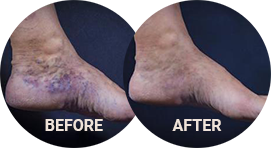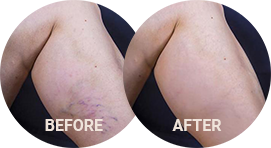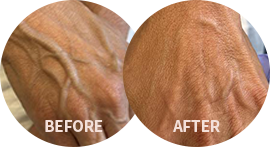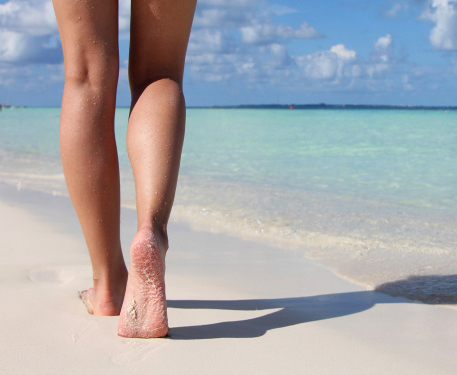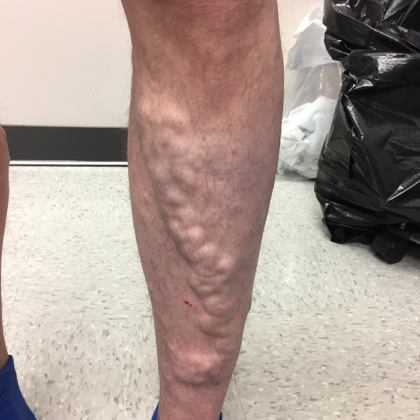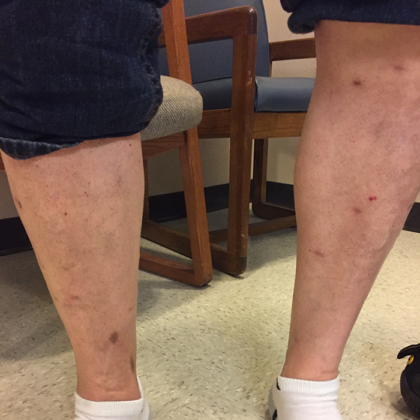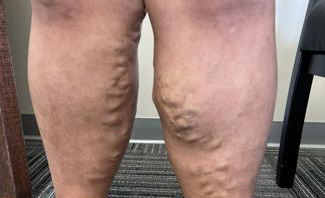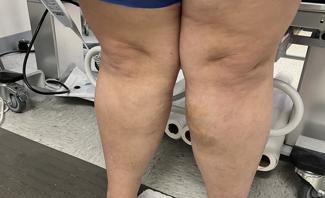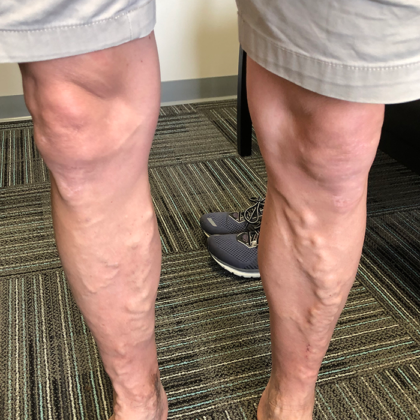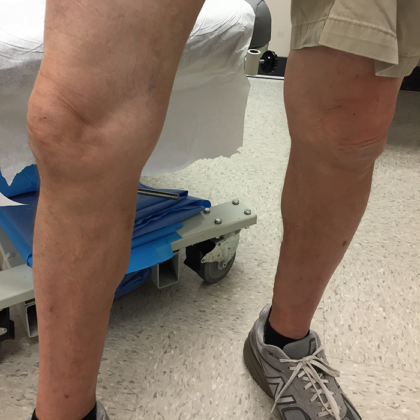Contents
- 1 What Are Varicose Veins and How Do They Affect My Health?
- 2 Before and After Photos
- 3 What are Varicose Vein Treatments?
- 4 Personal Consultation
- 5 Varicose Vein Procedures
- 6 Results of Varicose Vein Treatments
- 7 Corresponding & Complementary Procedures
- 8 FAQ
- 8.1 What are varicose veins?
- 8.2 What will happen to my varicose veins if left untreated?
- 8.3 What are varicose vein treatments?
- 8.4 Will getting rid of my varicose veins affect my blood flow?
- 8.5 How Do I Prevent Varicose Veins from Forming?
- 8.6 Is there a difference between varicose veins and spider veins?
- 8.7 Do I need to take time off work to heal?
- 8.8 Will my insurance cover varicose vein treatments?
- 9 References
What Are Varicose Veins and How Do They Affect My Health?
Varicose veins are a common ailment where the leg and feet veins become enlarged and misshapen.
For some, they can be painful and may possibly be a symptom of a hidden circulatory problem. Varicose veins are caused by reflux of blood and blood products, due to increased pressure by gravity. The valves in our veins direct blood in one particular direction, from the feet to the chest, so when those valves become damaged or weakened, the blood begins to collect in the veins, causing an enlarged appearance. An estimated 20% of all people develop varicose veins due to valve weakening in their leg vessels. Varicose veins and venous insufficiency are one of the most prevalent conditions in the world.
Varicose veins used to be treated via painful surgical ligation and stripping (surgically tying the veins and or removing them).[1] Currently, there have been multiple studies confirming that treatment of varicose veins is associated with a substantial decrease in the subsequent incidence of severe health concerns like thromboembolism (blood clots) and peripheral artery disease compared with that in the absence of treatment.[2]
Before and After Photos
What are Varicose Vein Treatments?
Varicose vein treatments are the methods used to care for and eliminate varicose veins.
Varicose vein treatments are reserved for when self-care and compression stockings have been not able to alleviate the symptoms. However, studies suggest that conservative self-care therapy is less effective than minimally invasive thermal ablations, foam sclerotherapy and or phlebectomy to treat varicose veins.[3] Furthermore, studies have proven that the advent of minimally invasive techniques have changed the clinical landscape for varicose vein interventions tremendously for the better.[4]
Dr. David Naar is a board-certified vascular surgeon and the founder of the Premier Vein Clinic. Dr. Naar and his friendly staff are proud to serve the area of Westlake, Ohio, with the solutions to help you love your body.
If you wonder which vein treatment is right for you, keep reading and click here to request a consultation with Dr. Naar. You may also call (440) 641-0433, and one of his friendly staff members will discuss your possibilities and help schedule your appointment.
Be sure to also check us out on social media @vein_md on Twitter and Facebook, and Youtube.
Symptoms of Varicose Veins
- Touch sensitivity and tenderness
- Leg aching and throbbing pain
- Itching
- Nearby skin discoloration and darkening
- Superficial blood clots, inflammation (phlebitis)
- Leg tiredness, fatigue, weakness, and heaviness
- Night cramps, restless legs, and “Charlie Horses.”
The Health Benefits of Varicose Vein Treatments
- Improved psychological well-being
- Pain relief
- Better sleep
- Increased mobility
- Decreased incidence of thromboembolism
- Thromboembolism is the obstruction of a blood vessel by a blood clot that has become dislodged from another site in the circulatory system.
- Lowers the chances of peripheral artery disease (PAD)
- Peripheral artery disease is a circulatory problem where the arteries become narrow and reduces the flow of blood to your limbs. Evaluation for PAD is part of the work-up for venous disease.
Potential Complications of Untreated Varicose Veins
- Ulcers
- Bleeding
- Superficial blood clots
- Deep blood clots
Personal Consultation
At Premier Vein Clinic, Dr. Naar can assess you for underlying vascular issues that can cause varicose veins. During your consultation, he can provide a treatment plan to clear them from the surface of your skin.
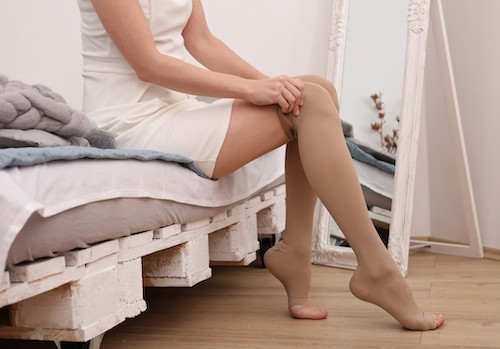
During your consultation, he will ask about your varicose veins, examine them, and review your medical history. He may also inquire about additional concerns like whether you are sensitive to certain medications.
Click here to schedule your consultation with Dr. Naar, or call now at (440) 641-0433.
Varicose Vein Procedures
Endovenous Thermal Ablation
Endovenous thermal ablation is a procedure that uses heat from radiofrequency or laser energy to make your varicose vein collapse, eventually causing it to disappear. Dr. Naar recommends the thermal ablation to patients who have saphenous junction reflux, which is a back-flow or reverse flow, like a waterfall effect.
Sclerotherapy
Sclerotherapy is an effective treatment for both spider and veins varicose veins . During this procedure, Dr. Naar cleans your skin before injecting a chemical solution called a sclerosant directly into the vein in question. The solution causes the vein to constrict, close, and eventually disappear.
Microphlebectomy
Microphlebectomy is a minor in-office procedure to remove varicose veins. Dr. Naar makes a tiny incision before inserting a hook-like instrument to grab onto the vein’s wall. He then removes the vein through the incision.
Results of Varicose Vein Treatments
Studies have indicated that serious disease symptoms were reduced and quality of life increased in patients with varicose veins after minimally invasive treatments. Staying active, using compression stockings, as well as proper medical attention and check-ups are significant in maintaining healthy veins.[5]
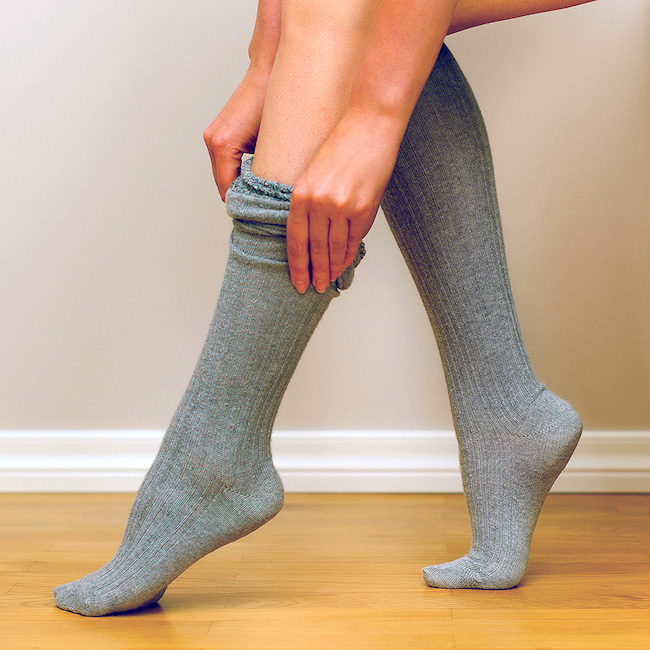
Some side effects of varicose vein treatments include swelling, bruising, changes in skin color, and pain. Most are temporary and will be resolved quickly.
Dr. Naar may wrap your legs in elastic bandages and have you wear compression socks for a certain amount of time.
Follow your post-procedure instructions about exercising even if you are sore. Inactivity ups the chances that you’ll develop a dangerous blood clot.
No matter what procedure you choose to pursue, it can only treat existing varicose veins. New ones can develop, but you can reduce their chances of appearing through:
- Proper diet and exercise
- Elevating your feet while sitting
- Not crossing your legs while sitting
- Not wearing tight clothes
Corresponding & Complementary Procedures
Spider Veins
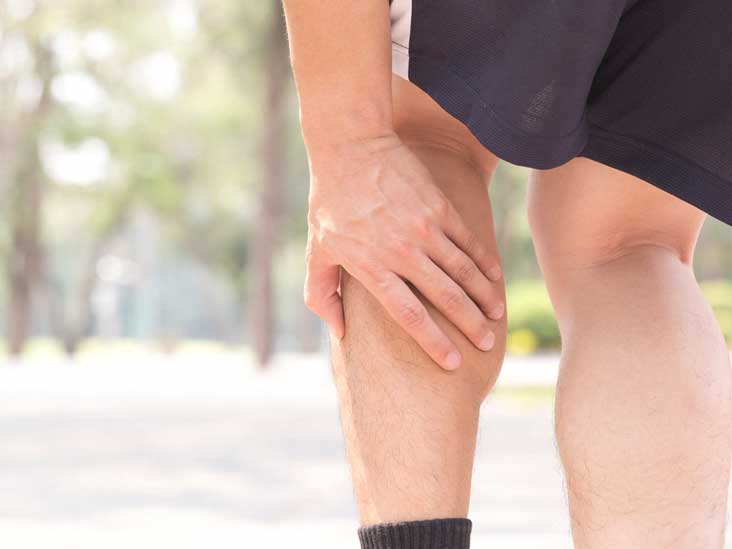
Spider veins are a condition where tiny blood vessels enlarge, causing stringy reddish and purple lines on the skin. This patterning happens over time and in patches. It’s also known as telangiectasia, but it is usually referred to as spider veins due to its web-like appearance. Spider veins can happen to anyone and occur anywhere on the body, but they are typically found on the legs and face.
If you enjoyed learning about spider veins, then we highly recommend you check out the Premiere Vein Clinic Blog. You will find great content like FAQs, lifestyle advice, news updates, and much more. Be sure to also check us out on social media. You can find us on Twitter and Facebook, and Youtube.
We look forward to seeing you.
FAQ
What are varicose veins?
Varicose veins are an ailment where veins in the legs and feet become engorged and misshapen. They are caused by an increase in blood pressure within the vein lumen. The valves that direct the blood in our veins go in one particular direction, so when those valves become damaged or weakened, the blood starts to pool up in the veins, creating their deformed appearance.
What will happen to my varicose veins if left untreated?
Left untreated, varicose veins can create sores, skin ulcers, blood clots, and deep vein thrombosis. It is recommended that you treat varicose veins as soon as possible to avoid any potential complications, which will get worse over time if left unaddressed.
What are varicose vein treatments?
Varicose vein treatments are the techniques used to remedy and get rid of varicose veins. Treatments are for when self-care regimens and compression stockings are not enough to handle the varicose veins.
Will getting rid of my varicose veins affect my blood flow?
No, removing your varicose veins will not affect your blood flow. Shutting down a faulty varicose vein will improve blood flow to the heart. The human body will eventually adapt, and the standard vein structure takes over to return the blood to the heart.
How Do I Prevent Varicose Veins from Forming?
It is still undetermined if varicose veins can indeed be prevented, but taking particular actions may limit the disease’s progression and symptoms. Exercise, being at a stable weight, avoiding excessively long periods of inactivity, and the use of compression stockings may all help alleviate symptoms.
Is there a difference between varicose veins and spider veins?
– Varicose veins have darker colors, are wider, and can become a health risk if left untreated. Typically, they tend to bulge and cause skin damage. Spider veins, meanwhile, are merely a cosmetic blemish.
– Spider veins are smaller in size, thinner, and have bluish or reddish coloration. They are virtually harmless and can appear up in areas such as the legs, behind the knees, and even on the face.
– Both of these conditions are caused by circulation complications. More pressure than usual on the veins and blood vessels will make them work harder to circulate the blood throughout the body.
Do I need to take time off work to heal?
All the listed treatments at the Premiere Vein Clinic can be done in the office with local anesthetic with minimal discomfort. Since treatments are minimally invasive, patients can resume most of their daily activities the day of, or day after treatment.
Will my insurance cover varicose vein treatments?
Most insurance companies will cover varicose vein treatments that are considered medically necessary and in cases when therapy with compression stockings is not adequate. Treatment for cosmetic reasons, however, is not covered.
References
- Fan Lin, Shiyi Zhang, Yan Sun, Shiyan Ren, Peng Liu; The Management of Varicose Veins. Int Surg 1 January 2015; 100 (1): 185–189. DOI: https://doi.org/10.9738/INTSURG-D-14-00084.1
- Chang, S., Hu, S., Huang, Y., Lee, M., Chung, W., Cheng, C., . . . Wen, Y. (2021). Treatment of Varicose Veins Affects the Incidences of Venous Thromboembolism and Peripheral Artery Disease. Circulation: Cardiovascular Interventions, 14(3). doi:https://doi.org/10.1161/CIRCINTERVENTIONS.120.010207
- Leopardi, D., BSc, Hoggan, B. L., Bsc BPsych (Hons), Fitridge, R. A., MS FRACS, Woodruff, P. W., FRACS, & Maddern, G. J., FRACS PhashD. (2009). Systematic Review of Treatments for Varicose Veins. Annals of Vascular Surgery, 23(2), 264-276. doi:https://doi.org/10.1016/j.avsg.2008.10.007
- Den Bremer, J., & Moll, F. L. (2010). Historical Overview of Varicose Vein Surgery. Annals of Vascular Surgery, 24(3), 426-432. doi:https://doi.org/10.1016/j.avsg.2009.07.035
- Tuncer Çoban, P., & Dirimeşe, E. (2019). Evaluation of quality of life after minimally invasive varicose vein treatment. Turk gogus kalp damar cerrahisi dergisi, 27(1), 49–56. https://doi.org/10.5606/tgkdc.dergisi.2019.16867


